These are the best Android phones you can buy right now
If you want to get your hands on the best Android phone in 2020, the Samsung Galaxy S20 FE is for you. It's a device that delivers all of the high-end specs and features you could ask for in a flagship smartphone, all while coming in at a lower price than a lot of its competition. That said, if you're in the market for something more affordable with different software, or a more unique design, there are plenty of other options to consider.
Top 6 Android phones at a glance
- Samsung Galaxy S20 FE — Best Overall: A fully-fledged flagship smartphone for less money than you'd expect.
- OnePlus 8 Pro — Best Premium: Offers an even better design, higher-quality cameras, and faster wireless charging.
- Google Pixel 4a — Best Value: If you like getting good bang-for-your-buck.
- Moto G Power — Best on a Budget: All-around great Android experience for an even better price.
- Samsung Galaxy Note 20 Ultra — Best Ultra Premium: Ultra-premium features and specs with a price to match
- Google Pixel 5 — Best Camera: Capture some of the best pictures ever.
What are the best Android phones?
There are a lot of contenders when it comes to the best Android phones, but we think the Samsung Galaxy S20 FE stands out above its many competitors as the go-to choice for most people. The S20 FE isn't the absolute most premium Android phone you can buy in 2020, but when looking at the specs and features it offers for the price, it's easily the best phone most people should buy.
The Galaxy S20 FE has everything you'd expect to see in a modern flagship: a top-tier Qualcomm Snapdragon processor, a 120Hz AMOLED display, great cameras, and reliable battery life. Higher-end features, such as wireless charging and IP68 dust/water resistance, are here as well. Everything you could ask for is present on the S20 FE, and does all of this with a retail price that's hundreds less than competing devices.
The Galaxy S20 FE is an exceptional smartphone, but if you have a few more dollars to spend and want something just a little more impressive, you can't go wrong with the OnePlus 8 Pro. You'll find a similar processor, display, and battery performance compared to the S20 FE, but the OnePlus 8 Pro has a few advantages over it. Its cameras are more capable, it supports ultra-fast 30W wireless charging, and you get a glass/metal design compared to the S20 FE's plastic construction.
We should also mention the Google Pixel 4a, which is a completely different category of smartphone compared to the Galaxy S20 FE and OnePlus 8 Pro. It has considerably lesser specs across the board and a cheaper design, but that also results in a vastly lower price. Times are tough for a lot of people right now, and if you want an Android phone that can do everything you ask of it while spending as little as possible, the Google Pixel 4a is the phone to get.
Samsung Galaxy S20 FE
The best Android phone overall
Bottom line: Samsung's Galaxy S20 FE is a solid, affordable 5G phone that offers most of what makes the Galaxy S20+ so good in a cheaper, more colorful package.
| Category | Galaxy S20 FE |
|---|---|
| Display | 6.5-inch OLED, 2400x1080, 120Hz refresh rate |
| Processor | Qualcomm Snapdragon 865 |
| RAM | 6GB |
| Storage | 128GB |
| Cameras | 12MP primary, 8MP telephoto, 12MP ultrawide, 32MP selfie |
| Charging | 15W wired, Qi wireless charging |
| Battery | 4,500 mAh |
| Water Resistance | IP68 |
| Dimensions | 161.6x71.1x9.3mm |
| Weight | 190g |
Pros
- Flat 120Hz display is terrific
- All-day battery life
- Promised three years of software updates
- Impressive cameras with 3x optical zoom
- Sturdy design with fun color options
Cons
- Not every color option is available everywhere
- Camera can be slow to load
Samsung clearly understands that 2020 is a year for people to pare back their expenses because the Galaxy S20 FE is a value flagship that really doesn't skimp. It's based on the successful foundation of the $1,200 Galaxy S20+, featuring a spacious 6.5-inch 1080p AMOLED display with a luxurious 120Hz refresh rate, a Snapdragon 865, 6GB of RAM, 128GB of storage, and an all-day 4,500mAh battery.
Of course, to hit that $700 price point, Samsung needed to make some sacrifices, so it traded the Galaxy S20 series' back glass for colorful plastic — the FE is available in six delicious colors — and cut back on the quality of the triple-camera setup ever-so-slightly.
Still, the phone has everything you'd expect in a high-end phone and performs just as well. We especially love the IP68 water resistance and wireless charging, two features rare in this price bracket. Plus, it shares the same primary camera sensor as the Galaxy S20 and S20+, which ensures beautiful results in good light and bad.
Samsung's One UI 2.5 is also on-board, and the company's promising three years of platform and security updates, ensuring that you'll be getting the latest Android features well into the next decade.
Finally, Samsung includes sub-6Ghz 5G in all variants of the Galaxy S20 FE, and we found performance to be excellent on both AT&T's and T-Mobile's 5G networks. If you want a Verizon version that supports mmWave, it's also available.
Best Android Phone Overall
Samsung Galaxy S20 FE 5G
$700 at Amazon $650 at Best Buy $700 at B&H
The Galaxy S20 FE offers nearly everything you'd find on the more expensive S20 variants, with high-end specs and impressive cameras.
OnePlus 8 Pro
The best premium Android phone
Bottom line: Have a bit more cash to spend? The OnePlus 8 Pro is every bit as good as the S20 FE, though it steps up to better cameras, a nicer design, and faster wireless charging.
| Category | OnePlus 8 Pro |
|---|---|
| Display | 6.78-inch AMOLED, 3168x1440, 120Hz refresh rate |
| Processor | Qualcomm Snapdragon 865 |
| RAM | 8 or 12GB |
| Storage | 128 or 256GB |
| Cameras | 48MP primary, 8MP telephoto 48MP ultra-wide, 5MP color filter |
| Charging | 30W wired and wireless |
| Battery | 4,510 mAh |
| Water Resistance | IP68 |
| Dimensions | 165.3x74.4x8.5mm |
| Weight | 199g |
Pros:
- 120Hz display is incredible
- Super-fast performance
- Very good cameras
- Large battery and fast charge speeds
- IP68 rating for dust/water resistance
Cons:
- Weak telephoto camera
The OnePlus 8 Pro is impressive and well-designed as any high-end smartphone can be. If you know anything about OnePlus phones, you'll be happy to know it doesn't upend the traditional OnePlus formula. Instead, it extends it to its logical place in the world of 2020 flagships with more features and a higher price.
The hardware goes toe-to-toe with any phone out there, and it's punctuated by the best display OnePlus has ever used. It's bright, colorful, and has a 120Hz refresh rate. Inside, there are exceptional specs, and that leads to fantastic performance thanks to the super-smooth OxygenOS software — it's just a joy to use.
The 8 Pro also brings the best cameras yet to the OnePlus phone, with a new primary sensor that steps up its game to a true flagship level. The entire camera experience is a small step behind the likes of the Galaxy S20+, but then again, it's also a little less expensive. Rounding out the hardware side of things, the OnePlus 8 Pro delivers great battery life and super-fast charge speeds (including support for both 30W wired and wireless charging).
Overall, the OnePlus 8 Pro earns one of our top commendations because it's just so easy to recommend to anyone looking for a flagship smartphone. It has a beautiful display, incredible performance, very good cameras, and long-lasting battery life. There's no major drawback to any aspect of the phone, making its price tag that much more appealing. It's not quite as good of a deal as the Galaxy S20 FE, but it's a great phone regardless.
Best Premium Android Phone
OnePlus 8 Pro Onyx Black
The OnePlus 8 Pro is one of the best Android phones you can buy in 2020, and that's all there is to it.
Google Pixel 4a
The best value Android phone
Bottom line: There are a lot of good smartphone deals out there, but none of them are as amazing as the Pixel 4a. From its flagship-grade camera, fast performance, reliable battery life, and long-term software support, no other phone gives you this much for so little.
| Category | Google Pixel 4a |
|---|---|
| Display | 5.81-inch OLED, 2340x1080, 60Hz refresh rate |
| Processor | Qualcomm Snapdragon 730G |
| RAM | 6GB |
| Storage | 128GB |
| Cameras | 12.2MP primary |
| Charging | 18W wired |
| Battery | 3,140 mAh |
| Water Resistance | ❌ |
| Dimensions | 144x69.4x8.2mm |
| Weight | 143g |
Pros:
- Flagship camera on a budget phone
- Easy to use in one hand
- AMOLED display looks great
- Snappy performance
- Three years of software support
Cons:
- Boring design
The Pixel 4a is the best phone value available today, period. Google's packed most of what makes the Pixel 4 series good into a smartphone that costs over 50% less. You also get a compact device that, despite its size, excels in the battery life department. Seriously, this phone lasts all day and then some.
Perhaps the most impressive part of the 4a is its camera, which is nearly on par with the Pixel 4. The main camera shoots exceptional photos in all lighting conditions, with Night Sight really showing its strength in poor lighting. Google even added Astrophotography mode this time around and improved the already-impressive Portrait Mode. The front-facing camera is also tack-sharp and focuses more quickly than on the Pixel 3a from last year. Both front and back, you're getting flagship-level camera quality out of a phone that's a fraction of the price. Google's also improved the video quality this year, thanks to an improved Snapdragon 730 SoC and 6GB of RAM standard.
So what do you lose by spending three hundred and fifty dollars instead of eight hundred or a thousand? Well, the Pixel 4a is made of plastic and lacks both water resistance and wireless charging, features you can take for granted at a higher price point. It also only comes in one size, a 5.8-inch variant, and one color, black. There are no storage size options, either: you get 128GB of internal memory, which should be plenty for most people, but a lack of microSD expansion may be a problem for the content collectors out there. And it should go without saying that the Pixel 4a lacks 5G support, but Google has unveiled the Pixel 4a 5G, which launched on November 19 for just under $500 with 5G support, a larger battery, an ultrawide camera, and more.
All of these limitations shouldn't impede your desire to buy the Pixel 4a, which has been one of the best smartphone surprises of 2020 so far— even if it did launch a few months late. From the size to the performance to the battery life and camera quality, Google's latest budget phone is a winner.
Best Value Android Phone
Google Pixel 4a
$349 at Amazon $300 at Best Buy $349 at B&H
The Pixel 4a has flagship camera quality at a fraction of the price. It's also one of the few legitimately compact phones available.
Moto G Power
The best Android phone on a budget
Bottom line: The Moto G Power doesn't have the best specs or design, but for people that are shopping with a tight budget, it delivers a thoroughly enjoyable Android experience for a shockingly small amount of money.
| Category | Moto G Power |
|---|---|
| Display | 6.4-inch LCD, 2300x1080, 60Hz refresh rate |
| Processor | Qualcomm Snapdragon 665 |
| RAM | 4GB |
| Storage | 64GB |
| Cameras | 16MP primary, 8MP ultra-wide, 2MP macro |
| Charging | 10W wired |
| Battery | 5,000 mAh |
| Water Resistance | Water-repellant coating |
| Dimensions | 159.9x75.8x9.6mm |
| Weight | 199g |
Pros:
- Easy on the wallet
- Up to three-day battery life
- Runs most apps/games just fine
- Clean, intuitive software
- Works with every U.S. carrier
Cons:
- No NFC for Google Pay
- Only promised one software update
While a lot of this list focuses on high-end Android phones, the "best" you can buy doesn't necessarily mean the most expensive or most premium. For a lot of people, the best Android phone is the one that runs all of their apps and games, keeps them connected with loved ones, and does so while costing as little as possible. If that's the kind of phone you're shopping for, you'd like to steer your attention towards the Moto G Power.
Compared to the OnePlus 8 Pro and Galaxy S20+, the Moto G Power isn't nearly as impressive. It has an LCD that's only 60Hz, it features a plastic construction that scratches fairly easily, and the cameras won't blow you away any time soon. Here's the thing, though — none of that stuff matters. If you want a phone that'll work the way you want it to and not make you want to tear your hair out, the Moto G Power fits the bill perfectly.
Despite its lower specs, there's nothing about the Moto G Power that's a deal-breaker. The display looks more than good enough given the phone's low price, it can handle just about any app or game without serious issues, and the cameras (while not amazing) are perfectly fine for sharing quick pictures on Twitter and Instagram. There's also the gigantic 5,000 mAh battery, which can get you through two or three days of full use on a single charge. Seriously.
The lack of NFC for Google Pay is disappointing, as is the fact that Android 11 is the only major update the Moto G Power will ever see. If those two things don't matter to you, however, this is one of the best cheap Android phones you can buy right now.
Best Budget Android Phone
Moto G Power (2020)
$180 at Amazon $180 at Best Buy $227 at Walmart
The Moto G Power is plenty fast, has a decent display, excellent battery life, and a price tag that your wallet will love.
Samsung Galaxy Note 20 Ultra
The best ultra premium Android phone
Bottom line: The Note 20 Ultra is a phone that was made to do it all. It has top-of-the-line performance, a huge display that looks outstanding, and an ultra-powerful S Pen that can be used for drawing, note-taking, and so much more.
| Category | Samsung Galaxy Note 20 Ultra |
|---|---|
| Display | 6.9-inch AMOLED, 3088x1440, 120Hz refresh rate |
| Processor | Qualcomm Snapdragon 865+ |
| RAM | 12GB |
| Storage | 128 or 512GB |
| Cameras | 108MP primary, 12MP telephoto, 12MP ultra-wide |
| Charging | 25W wired and 15W wireless |
| Battery | 4,500 mAh |
| Water Resistance | IP68 |
| Dimensions | 164.8x77.2x8.1mm |
| Weight | 208g |
Pros:
- Samsung's best design in years
- 120Hz AMOLED screen
- S Pen is more powerful than ever
- Really excellent cameras
- All-day battery
Cons:
- In-screen fingerprint sensor
- Incredibly high price
The world turns, seasons change, and Samsung updates its Note lineup. It's an annual constant, and yet Samsung went and made some massive changes to the Note lineup this year. The Galaxy Note 20 Ultra is an imposing and beautiful object, arrayed in a matte glass back finish with a massive camera bump located in the top left corner. The camera, which has three lenses, is one of the most impressive updates to this Note 10+ successor, but the real story starts, as always, with the display.
The 6.9-inch AMOLED display on the Note 20 Ultra is absolutely stunning, among the brightest, most colorful, and accurate ever made. It's also the canvas for the new-and-improved S Pen, which now boasts latency three times less than the previous generation Note. That means text, sketches, and other S Pen-related activities feel more like real paper than ever. The Snapdragon 865+ SoC and 12GB of RAM inside the phone attempt to justify the imposing price tag, but Samsung's cut absolutely no corners here. The 4,500mAh battery lasts all day (most of the time), and the dual speakers are just as impressive as ever.
Getting back to the cameras, here's where the Note 20 Ultra really tries to differentiate itself from previous Note phones. The main 108MP sensor is just huge, physically, and artistically, allowing you to take beautiful portraits and close-ups with shallow depth of field. Samsung's also fixed the autofocus issues that plagued the Galaxy S20 Ultra, too, so this is easily the company's best camera ever. Even better, you get a true 5x telephoto camera that cuts no corners thanks to an engineering marvel in the form of a prism.
Samsung's also cleaned up its software game in the form of One UI 2.5. It's still based on Android 10, but the company's made some subtle tweaks to the way everything coheres, and it finally feels like Samsung has a unified approach to software. Plus, Samsung's promised three years of software updates, so it's likely the Note 20 Ultra will get Android 13 sometime in 2022 or 2023. How cool is that?
The Galaxy Note 20 Ultra isn't cheap, but it could be the best premium phone on the market right now. It's still a bit too pricey to be our top pick, but if you want the phone with the least compromises, this is the one to get.
Best Ultra Premium Android Phone
Samsung Galaxy Note 20 Ultra
From $1,008 at Amazon From $1,300 at Best Buy From $1,000 at B&H
Samsung one-upped itself with the Note 20 Ultra, offering a perfect blend of design, performance, and note-taking excellence.
Google Pixel 5
The best Android camera
Bottom line: They say that the best camera you have is the one you have with you, so make sure it's the best it can be. Google's Pixel 5 takes incredible photos in virtually any setting, and thanks to the company's top-notch image processing, you don't even have to be a pro photographer to get impressive shots.
| Category | Google Pixel 5 |
|---|---|
| Display | 6.0-inch OLED, 2340x1080, 90Hz refresh rate |
| Processor | Qualcomm Snapdragon 765G |
| RAM | 8GB |
| Storage | 128GB |
| Cameras | 12.2MP primary, 16MP ultra-wide |
| Charging | 18W wired, 15W wireless, 5W reverse wireless |
| Battery | 4,080 mAh |
| Water Resistance | IP68 |
| Dimensions | 144.7x70.4x8.0mm |
| Weight | 151g |
Pros:
- The best camera on the market
- Compact and comfortable to hold
- 90Hz AMOLED display
- Great battery life
- Three years of software updates
Cons:
- Might be too small for some users
The Pixel 5 is Google's latest flagship smartphone that you can buy, and compared to past releases, it's a huge departure. Rather than trying to have the absolute best specs possible, the Pixel 5 focuses on offering a great all-around user experience at a competitive price. And, in just about every regard, it succeeds.
First thing's first, we have to talk about the Pixel 5's camera performance. Simply put, if camera quality is a key priority for you, the Pixel 5 should be at the very top of your shopping list. The 12.2MP primary and 16MP ultra-wide cameras may not look all that impressive on paper, but combined with Google's unmatched image processing, they kick out truly incredible results. The detail is sharp, colors are true-to-life, and the Pixel 5 handles low-light environments without a hitch. The best part? The Pixel 5 does all of this more reliably than any other smartphone.
Outside of killer cameras, the Pixel 5 has a bunch more to offer. We're in love with its design, which is refreshingly compact and is made entirely out of aluminum. The paint job gives it an exceptional in-hand feel, and if you ask us. the Sorta Sage color is one of the best we've ever seen on a phone. Period.
Rounding out the Pixel 5 experience is a 90Hz AMOLED display, fast performance thanks to the Snapdragon 765G processor, and long-lasting battery life. For considerably less money than a lot of other flagships, the Pixel 5 is well worth your consideration.
Best Android Phone Camera
Google Pixel 5
$700 at Amazon $650 at Best Buy $699 at B&H
Ready to take the best pictures ever? That's what you'll be doing if you buy the Pixel 5.
Google Pixel 4a 5G
The best 5G value Android phone
Bottom line: If you like what you see with the Pixel 5 but can't stomach its price tag, the Pixel 4a 5G could be the perfect alternative. The core experience is virtually identical since it features the exact same cameras and processor. If you're OK with a cheaper design and lesser display, it's a great pick.
| Category | Google Pixel 4a 5G |
|---|---|
| Display | 6.2-inch OLED, 2340x1080, 60Hz refresh rate |
| Processor | Qualcomm Snapdragon 765G |
| RAM | 6GB |
| Storage | 128GB |
| Cameras | 12.2MP primary, 16MP ultra-wide |
| Charging | 18W wired |
| Battery | 3,800 mAh |
| Water Resistance | ❌ |
| Dimensions | 153.9x74.0x8.2mm |
| Weight | 168g |
Pros:
- Exact same cameras as the Pixel 5
- Fantastic performance for the price
- Reliable battery life
- OLED screen looks great
- Killer price
Cons:
- Boring plastic design
- No wireless charging
- No water resistance
Google crafted something special with the Pixel 5. It's an incredible phone, but what if $700 is just more than you're looking to spend right now? In that case, we'd turn your attention towards the Pixel 4a 5G. It's a very similar phone in more ways than one, but thanks to a couple of smart compromises, it costs considerably less.
So, what's the same? Compared to the Pixel 5, the Pixel 4a 5G has the exact same processor, cameras, and storage. That means it's plenty fast, takes amazing photos, and has more than enough space for all of your apps/games. It also has a very similar battery life (which is to say that it's great), along with an identical software experience that's backed by years of guaranteed updates.
As for how Google was able to cut costs, here's what you don't get with the Pixel 4a 5G: there's no wireless charging, you don't have an IP rating for dust/water resistance, the screen is 60Hz instead of 90Hz, and the phone is made out of plastic instead of aluminum. Those are notable compromises you do need to consider, but if none of those things matter to you, the Pixel 4a 5G is an excellent value that should not go ignored. And, as the name suggests, you're still future-proofing yourself with 5G support.
Best Value Android Phone With 5G
Google Pixel 4a 5G
$459 at Amazon $450 at Best Buy $499 at B&H
If you want an affordable phone with 5G and amazing cameras, nothing does it as well as the Google Pixel 4a 5G.
OnePlus 8T
The best Android phone for international buyers
Bottom line: The world of international Android phones is a vast and varied one, and the OnePlus 8T is one of the best you can buy. It has a fantastic AMOLED display, top-notch specs, and is an especially great deal for shoppers outside of the U.S.
| Category | OnePlus 8T |
|---|---|
| Display | 6.55-inch AMOLED 2400x1080 120Hz refresh rate |
| Processor | Qualcomm Snapdragon 865 |
| RAM | 12GB |
| Storage | 256GB |
| Cameras | 48MP primary, 16MP ultra-wide, 5MP macro, 2MP monochrome |
| Charging | 65W wired |
| Battery | 4,500 mAh |
| Water Resistance | ❌ |
| Dimensions | 160.7x74.1x8.4mm |
| Weight | 188g |
Pros:
- Blazing-fast performance
- Sleek, attractive design
- 120Hz AMOLED display
- Tons of RAM and storage
- 65W charging is mind-blowing
Cons:
- Not the best value in the U.S.
The OnePlus 8T is OnePlus's newest smartphone offering, and all-in-all, it has a lot to offer. The 8 Pro is still the higher-end and more feature-rich OnePlus handset, but if you have a bit less cash to spend and are an international user, the 8T drives a hard bargain.
Powering the phone is Qualcomm's Snapdragon 865 processor, along with a generous 12GB of RAM. That allows for incredible performance no matter what you're doing, and thanks to the 120Hz display, everything moves like butter no matter how hard you're pushing the phone. You also get 256GB of storage for all your local files, in addition to a 4,500 mAh battery that allows for long endurance.
When it comes time to refuel the OnePlus 8T, it uses the company's new Warp Charge 65 charging standard. This means you can charge the 8T from 0 - 100% in just 39 minutes, making it one of the fastest charging solutions available right now. The lack of wireless charging is a bummer, but this definitely makes up for it.
The OnePlus 8T is a good purchase if you live in the U.S., but thanks to phones like the Galaxy S20 FE and Pixel 5, it's not the same amazing value that past OnePlus phones have been. In other markets, however, the 8T is considerably more affordable. If you live somewhere like India or the U.K., the 8T is a lot more appealing.
Best International Android Phone
OnePlus 8T
$649 at Amazon ₹ 42,999 at Amazon India £569 at Amazon UK
The OnePlus 8T is officially available in the U.S., but its value truly shines if you can buy it in other markets.
Samsung Galaxy S20+
The best alternative Samsung phone
Bottom line: The higher price of the Galaxy S20+ isn't for everyone, but if you can afford it, you're in for something special. Compared to the OnePlus 8 Pro, you're primarily benefitting from nicer cameras, an even better display, and a ton of extra features that are only available on a Samsung phone.
| Category | Samsung Galaxy S20+ |
|---|---|
| Display | 6.7-inch AMOLED, 3200x1440, 120Hz refresh rate |
| Processor | Qualcomm Snapdragon 865 |
| RAM | 8GB |
| Storage | 128 or 512GB |
| Cameras | 12MP primary, 64MP telephoto, 12MP ultra-wide, 0.3MP depth |
| Charging | 25W wired and 15W wireless |
| Battery | 4,500 mAh |
| Water Resistance | IP68 |
| Dimensions | 161.9x73.7x7.8mm |
| Weight | 186g |
Pros:
- Industry-leading display
- Premium design/build quality
- Wonderful cameras
- Excellent battery life
- Tons of software features
Cons:
- Fingerprint sensor is hit-or-miss
Before the Galaxy S20 series came out, our top pick here was the Galaxy S10+ — and everything Samsung did this year made it easy to recommend the Galaxy S20+. The S20+ makes improvements across the board, starting with the display. It's a 6.7-inch AMOLED panel with a 120Hz refresh rate, and it's easily one of the very best screens you can get on a smartphone in 2020. We're also happy to see the Snapdragon 865 processor, which allows for breakneck speeds and native 5G support on all U.S. carriers.
Samsung made improvements to other specs, too, with the S20+ offering a large 4,500 mAh battery that has more than enough juice for even the most intense of power-users. There's also plenty of RAM and storage to keep you happy, with Samsung still allowing you to add additional space with a microSD card if you need to.
The huge move up is with the cameras, with a new array both front and back. The new sensors are all larger and let in more light so you can take dramatically better low-light photos. It's not entirely on the level of the Pixel 5, but this is a big step up for Samsung and is no longer a shortcoming of this flagship. You also get capable zooming up to 5X, while keeping an ultra-wide camera for more shooting variety.
Rounding out the Galaxy S20+ are all of the usual Samsung trimmings you've come to expect. The company's One UI software experience is jam-packed with features, and while it can be a bit overwhelming at times, there's no denying the utility that's added by the software. Samsung Pay also continues to be the best mobile payment service on the market, supporting NFC and MST transactions so you can pay with the S20+ at virtually any business.
Best Alternative Samsung Phone
Samsung Galaxy S20+
$727 at Amazon $900 at Best Buy From $800 at Walmart
For a few more dollars, the Galaxy S20+ gives you an even better display, more capable cameras, and extra software features.
Sony Xperia 1 II
The best Android phone for video
Bottom line: Lots of phones shoot great-looking video these days, but few offer as many features and settings in this department as the Sony Xperia 1 II. If you consider yourself a videographer and want a phone you can use for creative work, this is what you should get.
| Category | Sony Xperia 1 II |
|---|---|
| Display | 6.5-inch OLED, 3840x1644, 60Hz refresh rate |
| Processor | Qualcomm Snapdragon 865 |
| RAM | 8GB |
| Storage | 256GB |
| Cameras | 12MP primary, 12MP telephoto, 12MP ultra-wide, 0.3MP time-of-flight |
| Charging | 21W wired and 11W wireless |
| Battery | 4,000 mAh |
| Water Resistance | IP68 |
| Dimensions | 165.1x71.1x7.6mm |
| Weight | 181g |
Pros:
- Absolutely gorgeous 4K display
- Fast performance
- There's a headphone jack
- Extremely capable camera system
- Reliable battery life
Cons:
- Expensive
- Doesn't have 5G
Sony is most well-known these days for its cameras, headphones, and the PlayStation, but the company does still make Android phones. They don't get a lot of buzz and are pretty much invisible in the U.S., but that's not to say you should overlook what the company's kicking out. In fact, if you're a fan of shooting video with your smartphone, the Sony Xperia 1 II is an excellent consideration.
The Xperia 1 II comes equipped with Sony's Cinema Pro app, allowing you to have full control over the video that you shoot. There are endless settings and features to adjust, giving you options that a lot of other phones simply don't offer. On the technical side of things, the Xperia 1 II can shoot 4K HDR video at 24, 25, 30, and 60fps. There's also optical and electronic image stabilization, allowing you to keep all of your pans as smooth as can be.
When you're ready to view your footage, the Sony Xperia 1 II touts a seriously impressive screen. It's a 6.5-inch OLED one with a legit 4K resolution and 21:9 aspect ratio. It's one of the most cinematic displays on the market, and while there's no fast refresh rate, that doesn't take away from just how darn good it looks.
Ample storage, RAM, and battery capacity help to flesh out the rest of the Xperia 1 II experience, and we're pleased to see things like a headphone jack and wireless charging. It isn't the best deal out there, given the high price tag, but if you're serious about video, the Xperia 1 II makes a strong case for itself.
Best Android Phone for Video
Sony Xperia 1 II
$1,098 at Amazon $1,050 at Best Buy $1,198 at B&H
Video pros, listen up. The Sony Xperia 1 II is for you, offering super capable cameras and a cinematic screen unlike any other.
Nokia 5.3
The best Android phone under $200
Bottom line: Buying a new smartphone in 2020 is challenging for a lot of people. If you have a max budget of just $200 and aren't sure what to get, check out the Nokia 5.3. Despite having an ultra-low price, it manages to deliver on the fundamentals much better than you'd expect.
| Category | Nokia 5.3 |
|---|---|
| Display | 6.55-inch LCD, 1600x720, 60Hz refresh rate |
| Processor | Qualcomm Snapdragon 665 |
| RAM | 4GB |
| Storage | 64GB |
| Cameras | 13MP primary, 5MP ultra-wide, 2MP macro, 2MP depth |
| Charging | 10W wired |
| Battery | 4,000 mAh |
| Water Resistance | ❌ |
| Dimensions | 164.3x76.6x8.5mm |
| Weight | 185g |
Pros:
- Modern design
- Long-lasting battery
- Clean, simple software
- NFC for Google Pay
- Has a fingerprint sensor
Cons:
- Display is only HD
- No water resistance
Thanks to a multitude of events that have happened throughout the year, it's very likely you don't have a large budget for buying a new phone right now. If that happens to be the case for you, one of the best options to consider is the Nokia 5.3. It obviously isn't the most technically-impressive handset out there, but for its price, you couldn't ask for more.
Starting with its performance, it's powered by the same Snapdragon 665 chipset and 4GB of RAM found in the Moto G Power. That means it can run all of your apps and games just fine, and with 64GB of built-in storage (expandable up to 512GB), you have a good amount of space for storing all of them. There's also a generous 4,000 mAh battery, which Nokia says is big enough to get you through around two days of use on a single charge.
Taking over the front of the Nokia 5.3 is a 6.55-inch LCD display, featuring a resolution of 1600x720. This is far from the sharpest screen we've ever seen, but it looks perfectly fine given the low price. On a more positive note, we're thrilled to see a fingerprint sensor and even NFC for Google Pay payments.
Best Android Phone Under $200
Nokia 5.3
From $185 at Amazon $150 at Best Buy $199 at Walmart
Only have about $200 to spend on your next phone? The Nokia 5.3 delivers a great user experience for cheap.
Samsung Galaxy Z Fold 2
The best foldable phone
Bottom line: Folding phones are here, and the Galaxy Z Fold 2 is the best one we've seen yet. It's basically a smartphone and tablet in one device, and while it is outrageously expensive, it's also the best attempt yet we've seen for this form factor.
| Category | Xiaomi Mi 10 |
|---|---|
| Cover Display | 6.23-inch AMOLED, 2260x816, 60Hz refresh rate |
| Inner Display | 7.6-inch AMOLED, 2280x1768, 120Hz refresh rate |
| Processor | Qualcomm Snapdragon 865+ |
| RAM | 12GB |
| Storage | 256GB |
| Cameras | 12MP primary, 12MP telephoto, 12MP ultra-wide |
| Charging | 25W wired and 11W wireless |
| Battery | 4,500 mAh |
| Water Resistance | ❌ |
| Dimensions | 159.2x128.2x6.9mm (unfolded) and 159.2x68x16.8mm (folded) |
| Weight | 282g |
Pros:
- Bleeding-edge design
- Puts a mini-tablet in your pocket
- Excellent displays
- Great cameras and battery
- Well-optimized software
Cons:
- That price tag
- App compatibility issues
Just like any piece of technology, smartphones evolve and change as time goes on. We've seen screens get bigger, cameras get a lot more capable, and processors rival those found in computers. The next big thing for phones is the folding form factor, and so far, the best yet in this niche is the Samsung Galaxy Z Fold 2.
The best way to think about the device is as a phone and tablet in one. When the Z Fold 2 is closed, you're treated to a 6.23-inch AMOLED display that you can use for anything you'd like — checking email, scrolling through Twitter, watching YouTube videos, you name it. Should you find yourself wanting a larger canvas, however, all you need to do is open up the Z Fold 2 up. There, you're treated to a larger 7.6-inch AMOLED screen with a 120Hz refresh rate. It's a lot like having an iPad Mini that you can fold up and take with you wherever you want, and if you ask us, that's pretty amazing.
As you might expect for a new technology like a folding phone, the Z Fold 2 does come with some unique dilemmas. The Ultra-Thin Glass for the tablet display is prone to scratches a lot more than traditional glass, the folding design raises questions about long-term durability, and not all apps are properly optimized for that larger display size. There's also the matter of price, with the Galaxy Z Fold 2 costing more than two OnePlus 8 Pros.
This isn't a phone that we recommend everyone go out and buy right now, but as far as folding phones go, the Galaxy Z Fold 2 is the best we've seen to-date. If you're willing to spend the money and put up with those quirks, the Z Fold 2 has a lot to offer.
Best Android Phone Foldable
Samsung Galaxy Z Fold 2
$2,000 at Amazon $2,000 at Best Buy $2,000 at Samsung
Folding phones are the future, and leading that revolution is the Galaxy Z Fold 2 from Samsung.
How to pick the best Android phone
Android phones have never been better than they are right now. Regardless of how much or little money you can spend, you can go out and buy a phone that you'll be thoroughly happy with. Out of every single phone on the market in 2020, however, we have to give our top recommendation as the best Android phone to the Samsung Galaxy S20 FE.
Samsung makes amazing phones every single year, but more often than not, you need to pay out the nose for the privilege of owning one. With the Galaxy S20 FE, you get a top-tier Samsung experience at a better value than we've seen in a long time.
Compared to a more expensive Galaxy handset like the S20+, the FE is shockingly similar. It has a 120Hz AMOLED screen, the Snapdragon 865, great battery life, and the same One UI software experience. Even wireless charging and an IP68 rating are here, two things that often get cut with these new "value flagships" we're seeing more of lately.
There are plenty of other options on this list if something about the Galaxy S20 FE just isn't clicking for you, but at the end of the day, we think it's easy to see why it has our highest recommendation.
1. What size screen should I get?
There are a lot of different things you should consider when buying a new Android phone, and it all starts with the display. This is the component you interact with more than anything else, so it's important you get one that you'll enjoy using. Things like the resolution and refresh rate of a screen are worth talking about, but even more so is the size.
Smartphones come in all sorts of different shapes and sizes, and the biggest determining factor for that is the display. A 6.9-inch screen results in a much larger phone than one with a 5.8-inch one, and because of that, you need to know how big or small you're willing to go.
Take the Galaxy Note 20 Ultra, for example. It has the largest display on this list (outside of the Z Fold 2, but that's different), and because the screen is so huge, it's a phenomenal canvas for watching movies, playing games, and browsing the web. Basically, any kind of content consumption you do looks better on a larger display, because the more room you have, the bigger and easier-to-see your media is. The downside to this, however, is that phones like the Galaxy Note 20 Ultra can be rather unwieldy. Especially if you're someone with smaller hands, managing a phone like that can be a pain in the butt.
Then there are smaller-sized phones, such as the Pixel 4a. It's substantially easier to manage and can actually be used with one hand, but on the flip side, you have less room for your movies and games. It also means you can fit less content on the screen at one time, and if you're someone that likes to increase your font size so things are easier to read, that could result in you having to do a lot of scrolling.
And, of course, there are plenty of phones that fall somewhere in the middle between these two extremes. If you're really concerned about whether or not a phone will be too big or small, your best bet is to honestly go hands-on with it yourself at your local carrier store or Best Buy before making your purchase.
2. Are software updates important?
It's easy to compare things like displays, processors, and cameras, but something that's just as important to talk about is software updates. Android is constantly evolving and getting better, and unfortunately, only certain phones are backed by a few years of software support.
As it stands, Google and Samsung are the best in the business when it comes to supporting their phones with long-term updates. All of the Pixels and Galaxy devices mentioned on this list are backed by three years of major OS updates from their initial release, which is by far the best support any Android phone maker has to offer. Google even goes a step further with three years of guaranteed monthly security patches, which is an area in which Samsung still has some room to improve.
On the complete opposite end of the spectrum, you have a company like Motorola. Take the Moto G Power, which is only promised to get a single update to Android 11. Security patches are even worse, with Motorola having a track record of falling multiple months behind the latest patches.
So, how important is it that your phone gets software updates? That ultimately depends on how much you care about new Android features. Google releases a new version of Android every single year, and while these updates don't tend to be that drastic from year-to-year, they do give your phone important features and security settings that help keep it running in tip-top shape for a long time to come. It also ensures that your phone stays compatible with all the apps and games on the Play Store because as Android versions become too outdated, app developers eventually drop support.
A phone like the Moto G Power won't be unusable two years down the road just because it's running Android 11 and not Android 13, but it's also a bit disheartening to buy a product and know it's backed by such a small window of post-purchase support. This divide in updates is something Android has been faced with for years, and while companies are gradually getting better in these regards, we still have plenty of room to grow.
3. How many cameras and megapixels do I really need?
Over the last couple of years, there's been a trend going on with certain phone companies and them wanting to throw as many cameras as they can on their devices. As it's become more and more common for phones to ship with two, three, or even four cameras, there's something of an expectation that phones have to have multiple camera sensors to be any good.
Spoiler alert — this isn't true.
Let's look at the OnePlus 8T. It has a 48MP primary camera, 16MP ultra-wide, 5MP macro, and 2MP monochrome camera. Compared side-by-side with the single 12.2MP camera on the Pixel 4a, one would assume that the OnePlus 8T takes better photos. In reality, it absolutely does not.
Having those extra camera sensors can be a lot of fun, but only if they're high-quality. Far too often, we see companies throw in a bunch of extra cameras on their phones only to have these secondary lenses not be very good. The primary camera sensor is always the most important, so that's the one you want to be concerned about the most.
On a similar note, more megapixels (referred to as MP) doesn't always mean you're getting a better camera. As mentioned above, the 48MP camera on the OnePlus 8T takes worse photos than the 12.2MP camera found on the Pixel 4a. There are so many other factors that come into play with phone cameras, so don't let the megapixel count be your only factor for judging them when you're out shopping. Read reviews, look at camera samples, and you'll have a much better understanding of what kind of camera you're dealing with.
4. What size battery should I get?
Battery life isn't the most fun thing to talk about with smartphones, but ultimately, it's one of the most important components. Your phone can have the best display and processor around, but if it's constantly dying throughout the day, what's the point?
There are a lot of different battery capacities for all of the phones on this list, and if you don't regularly keep up with them, it can be difficult to know what a good size is and what isn't. So, here's a general rule of thumb. If you're buying an Android phone in 2020, the ideal capacity is one that's 4,000 mAh or larger. As phones move towards larger displays with faster refresh rates, more battery is needed to keep them powered throughout the day.
Of course, this can vary a bit depending on the type of phone you're buying. The Pixel 4a, for example, only has a 3,140 mAh battery but can still get through a full day of use without a hitch. What gives? It has a small display by 2020 standards and only has a 60Hz refresh rate — thus resulting in substantially less power use.
These are factors you'll need to consider when shopping for your phone, but generally, more mAh means more battery life.
5. What smaller features should I look out for?
Last but certainly not least, there are a few smaller features and specs that can be easy to overlook when doing your shopping — a prime example being NFC. NFC stands for Near Field Communication, and it's the chip in most phones that allows you to pay with your smartphone with Google Pay at grocery stores, restaurants, etc. The vast majority of modern Android phones have the feature, but some don't (one of which is the Moto G Power). You may not care about Google Pay, but if you do, it's worth double-checking that the phone you want to buy does, in fact, have NFC.
Another spec to check for is an IP68 rating. This is a seal of protection a lot of phones have, and it ensures they're protected from a certain amount of dust and water. If you happen to get caught outside in the rain or take your phone to the beach, an IP68 rating is nice peace of mind that your phone should survive just fine.
Some phones lack this IP rating, yet tout that they're resistant to water or have a water-repellent coating. Those devices are also probably fine to get splashed with water here and there, but you don't have that same guaranteed protection. The best-case scenario is to avoid getting your phone wet whenever possible, but if you happen to be around the water a lot, it's probably worth getting something with that IP68 protection.
We should also address a trend that's been going through the smartphone space for a few years now — the death of the headphone jack. The vast majority of new phones coming out these days no longer have the port, but there remain a few holdouts that continue to offer it. It's certainly nice to have if you're someone that primarily uses wired headphones or earbuds, but if you've moved on to the wireless bandwagon, it's not something you need to be all that concerned with.
We know that's a lot to take in, but once you have an understanding of the kind of phone you're looking for and the budget you have to work with, we hope this guide makes you feel better equipped to make the right decision. There are so many good phones out there, and we wouldn't recommend one on this list if we didn't think you'd be happy with it. Happy shopping, and enjoy your new phone!
Credits — The team that worked on this guide
Joe Maring is Android Central's Senior Editor and has had a love for anything with a screen and CPU since he can remember. He's been talking/writing about Android in one form or another since 2012 and often does so while camping out at the nearest coffee shop. Have a tip for the site? Reach out on Twitter @JoeMaring1 or send an email to joe.maring@futurenet.com!
from Android Central - Android Forums, News, Reviews, Help and Android Wallpapers https://ift.tt/2swlRpD
via IFTTT
 Reviewed by site
on
9:44 م
Rating:
Reviewed by site
on
9:44 م
Rating:
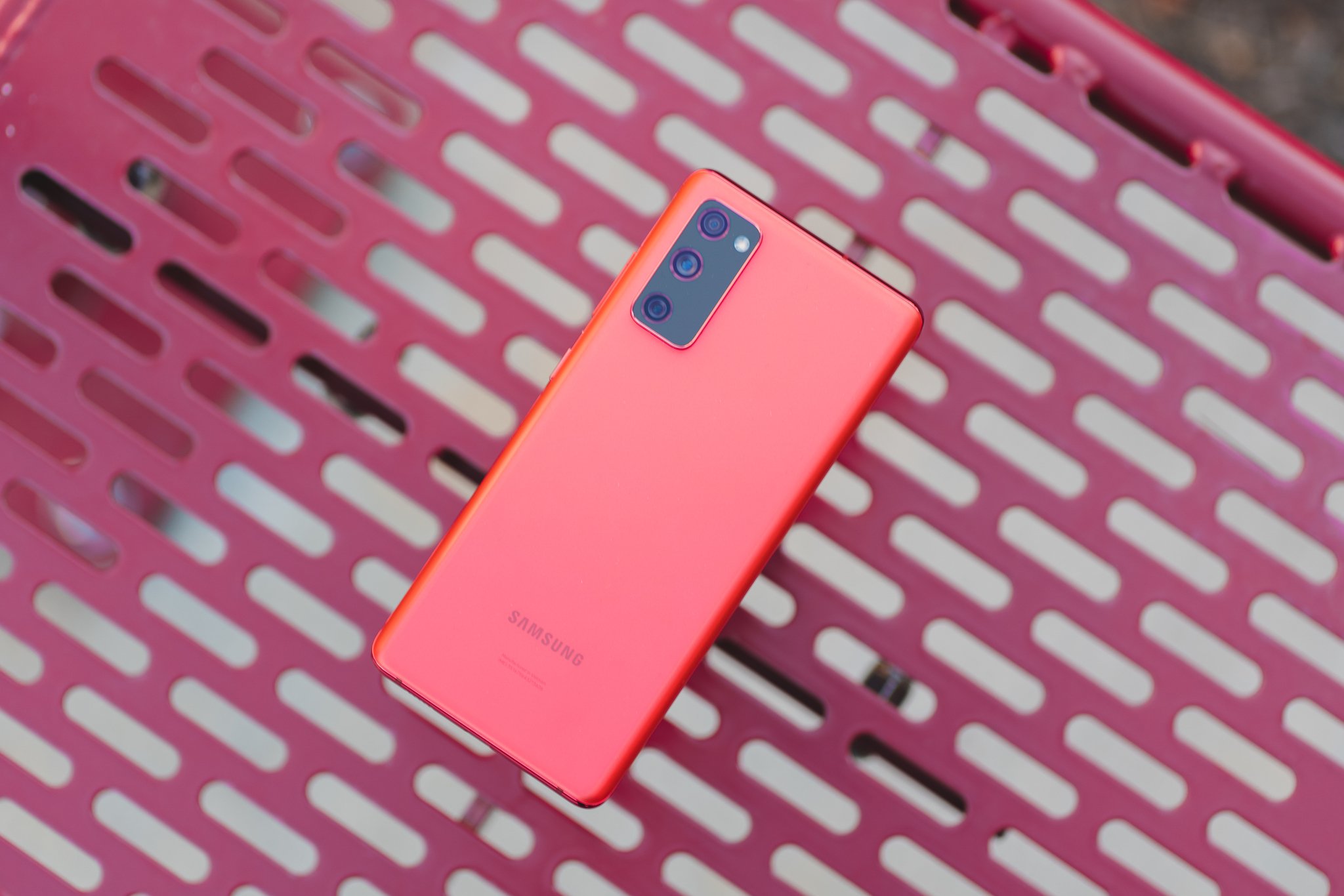
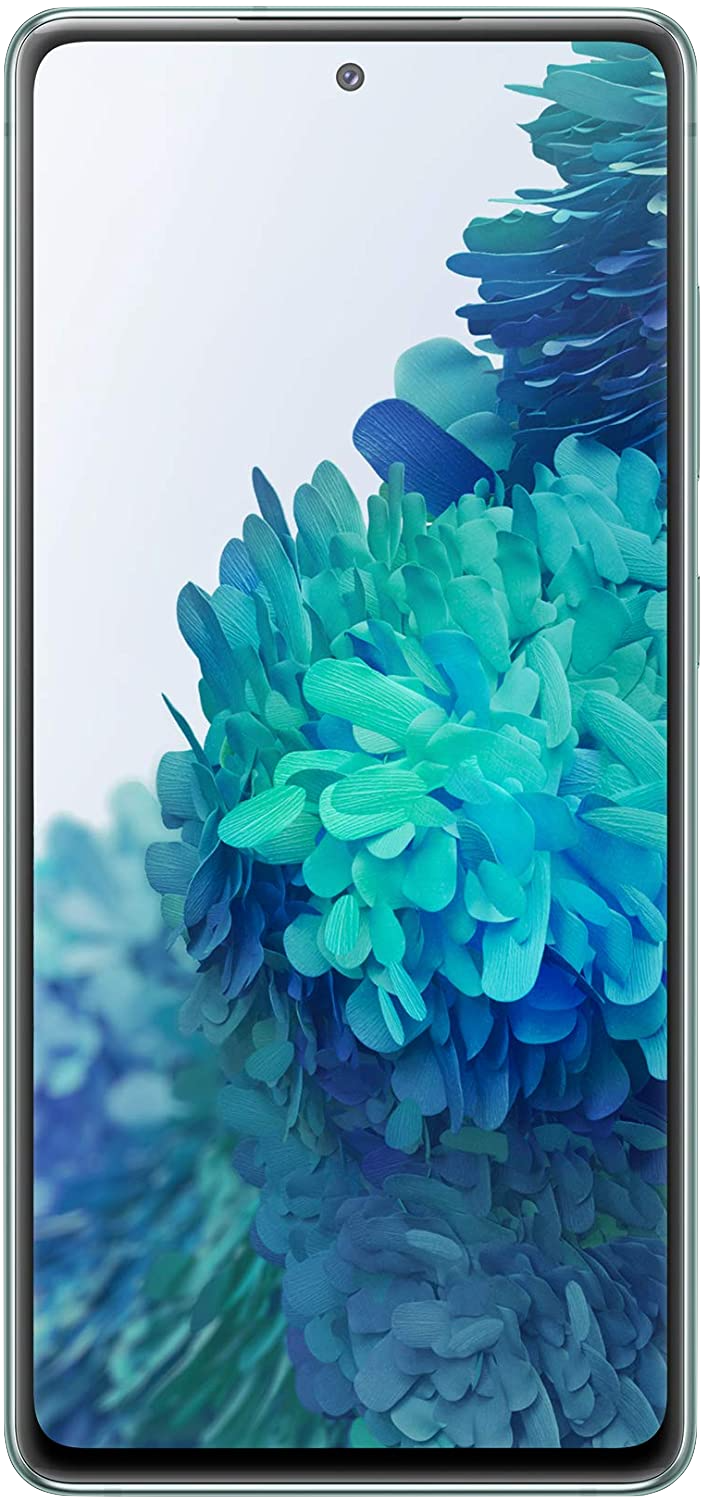

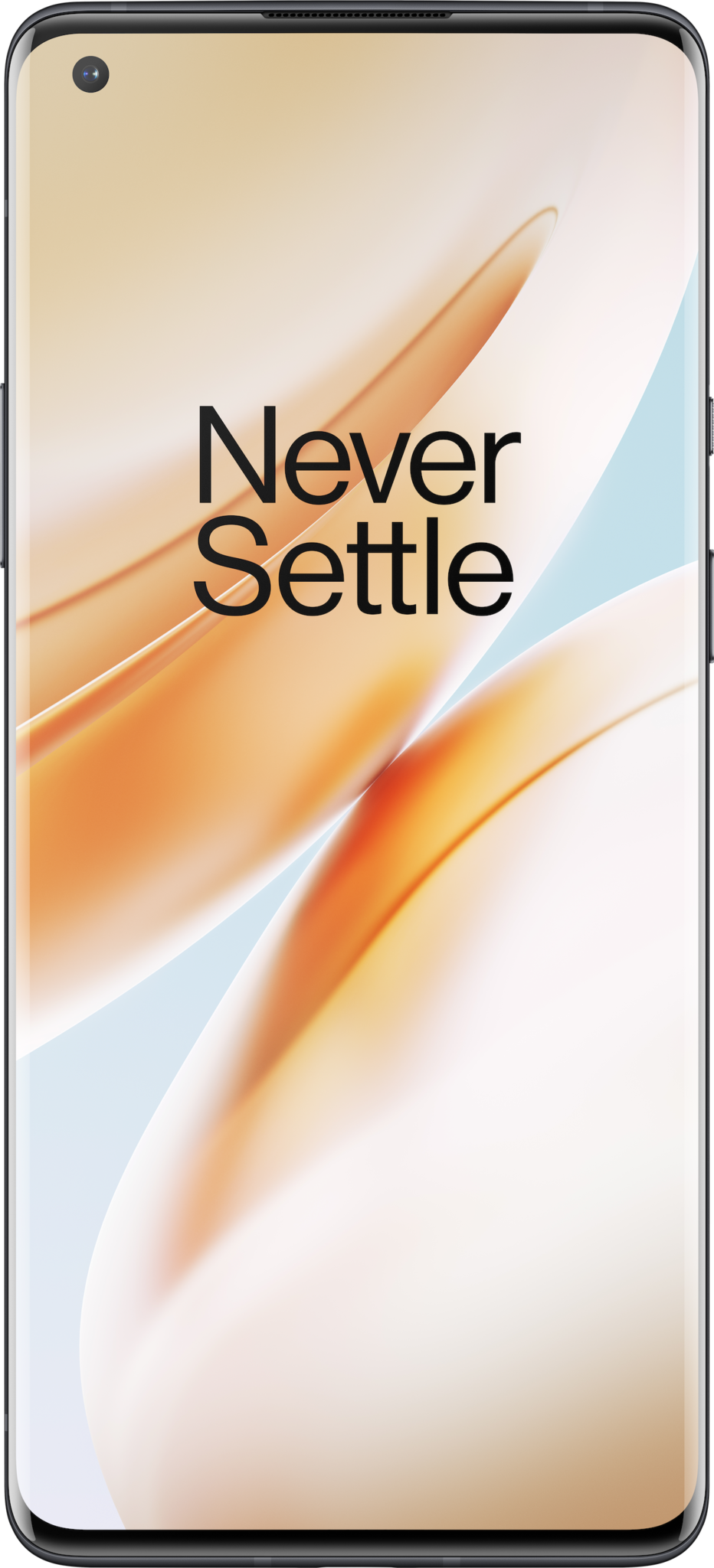
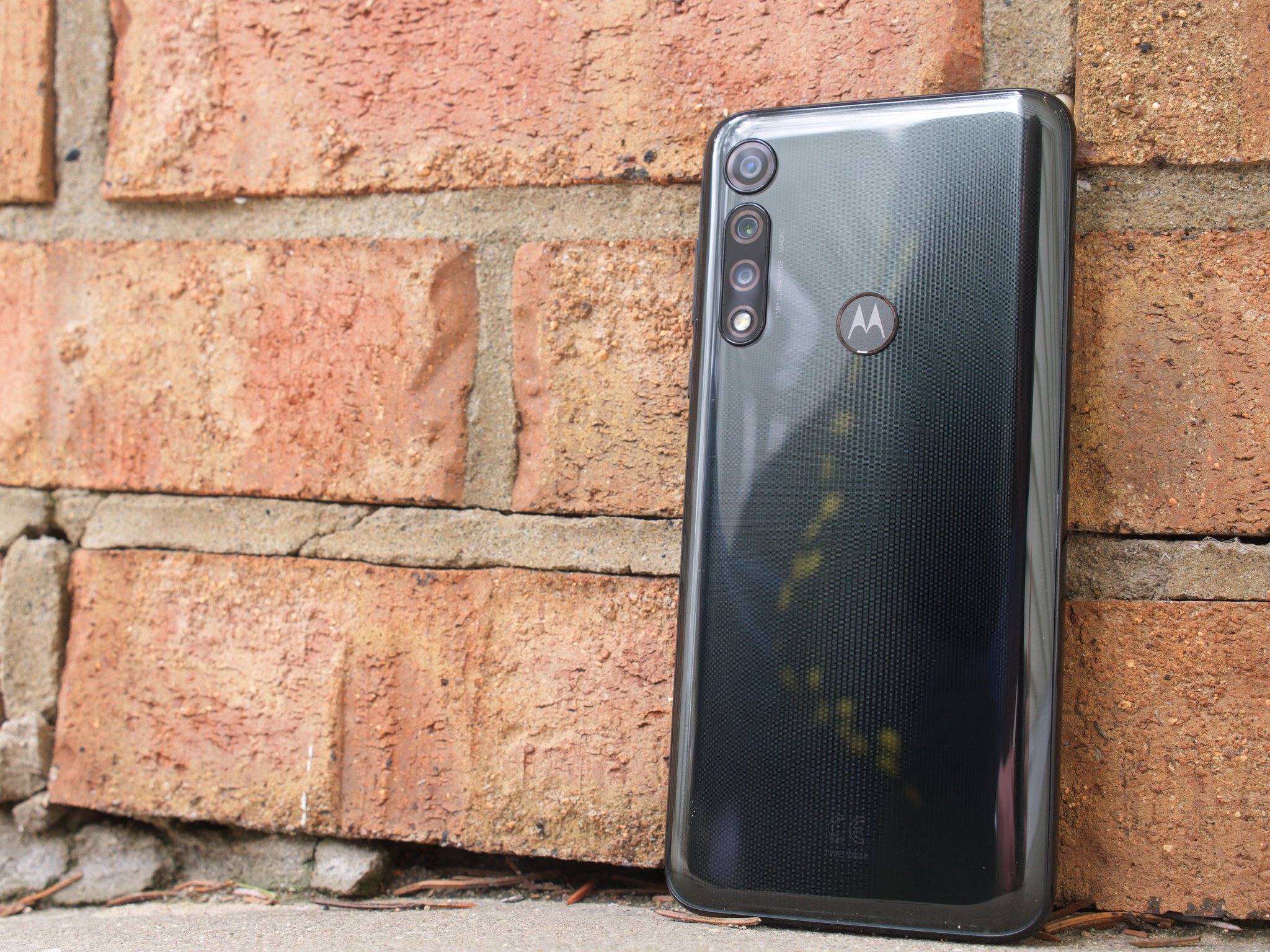

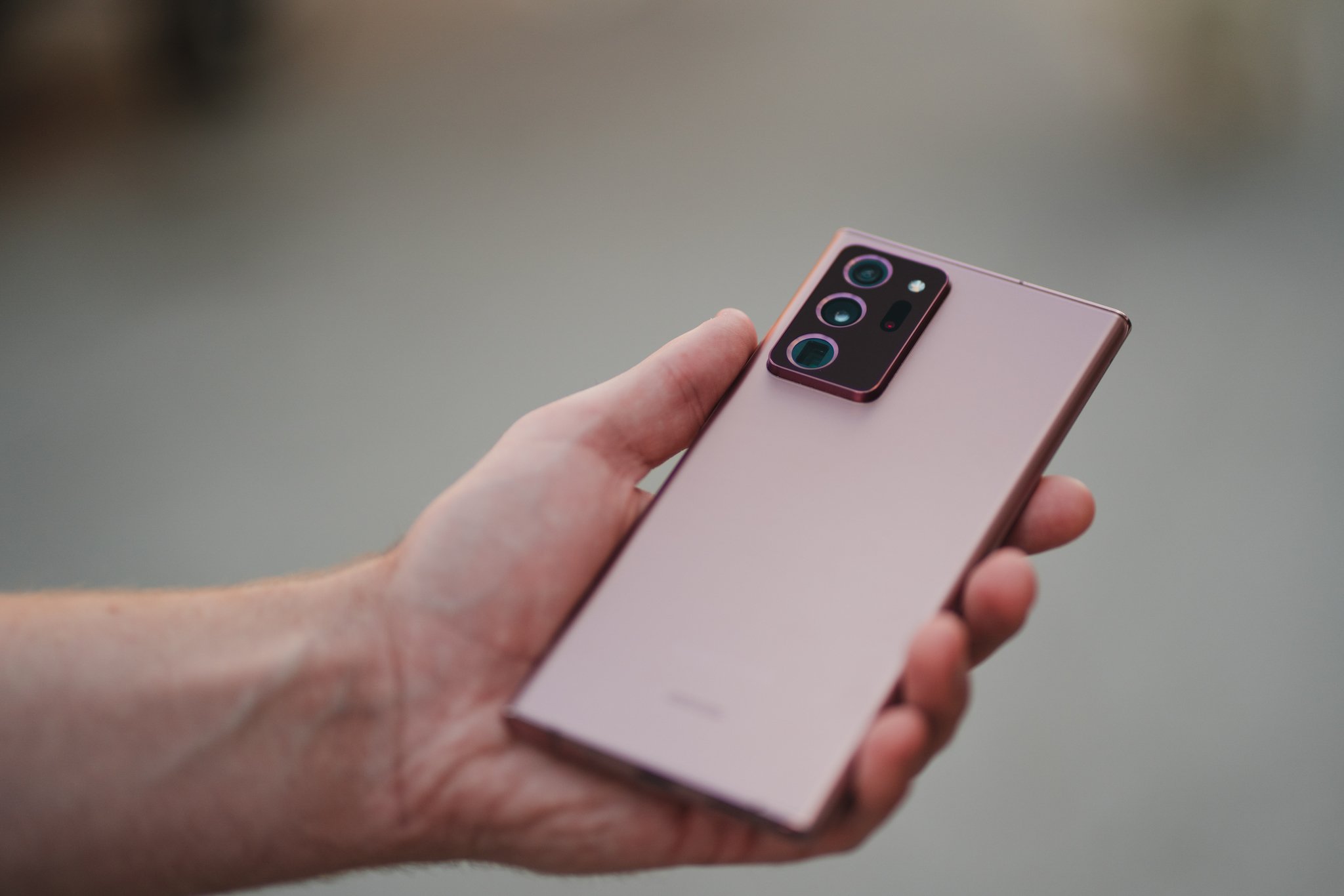

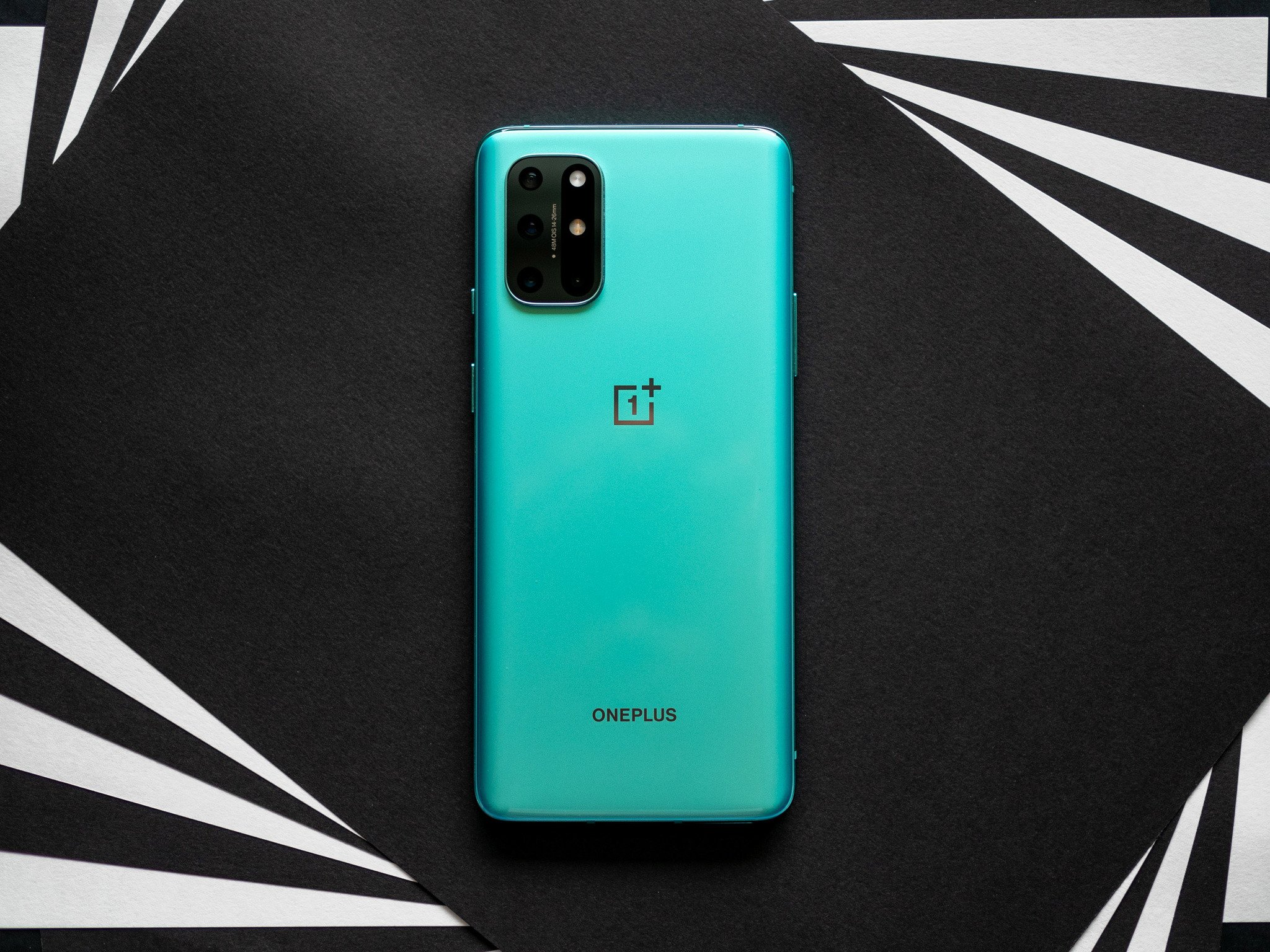
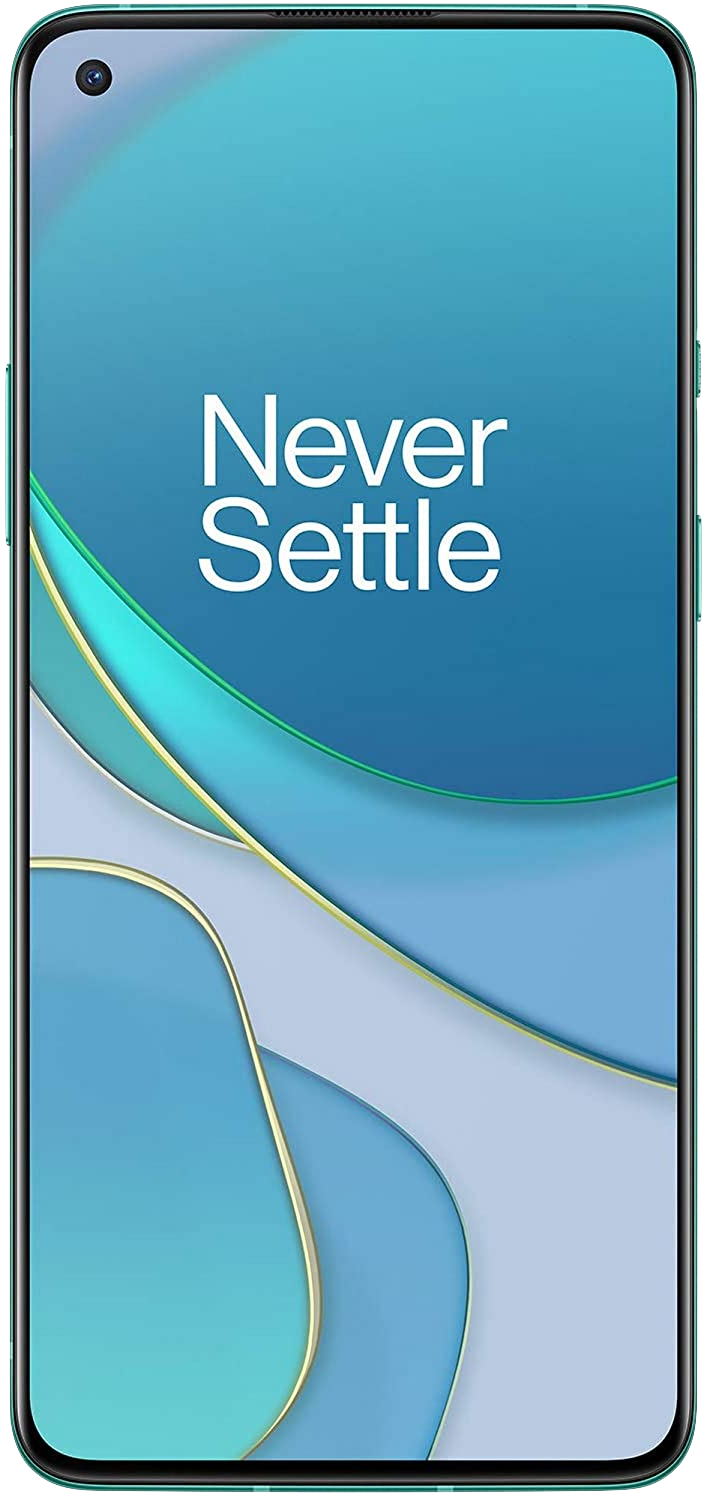
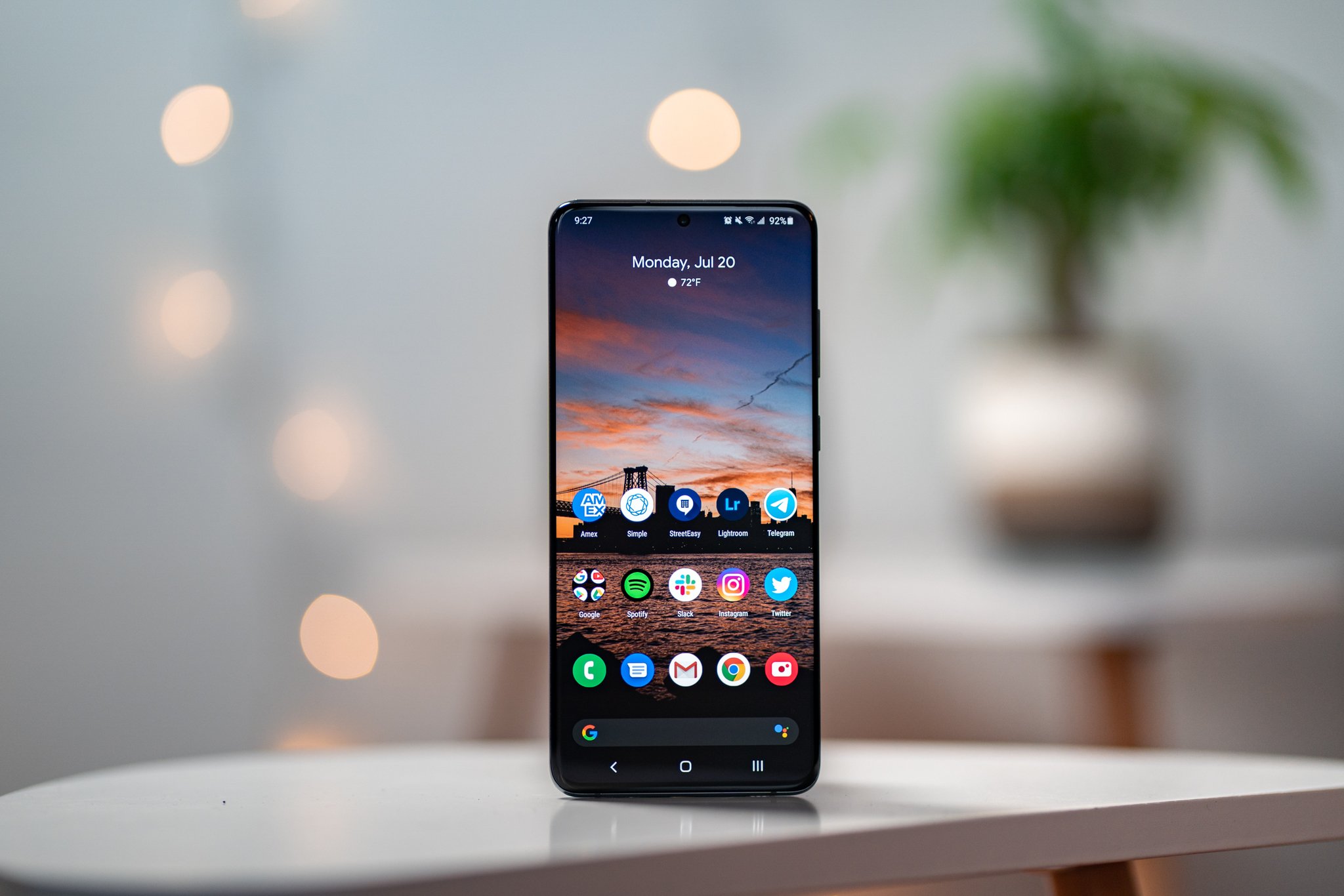
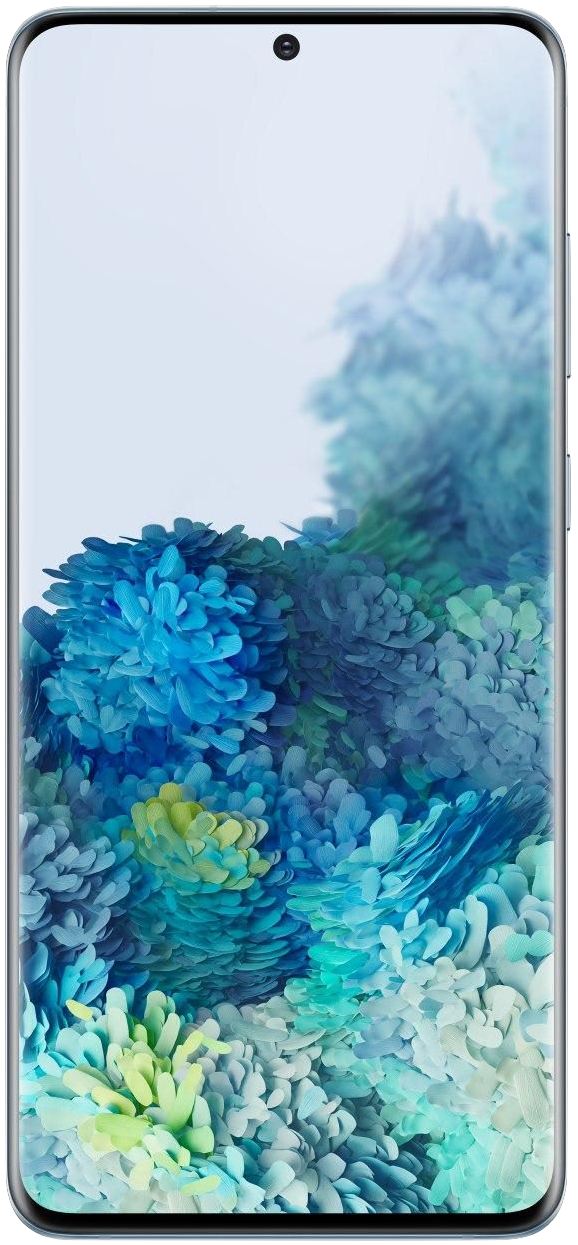
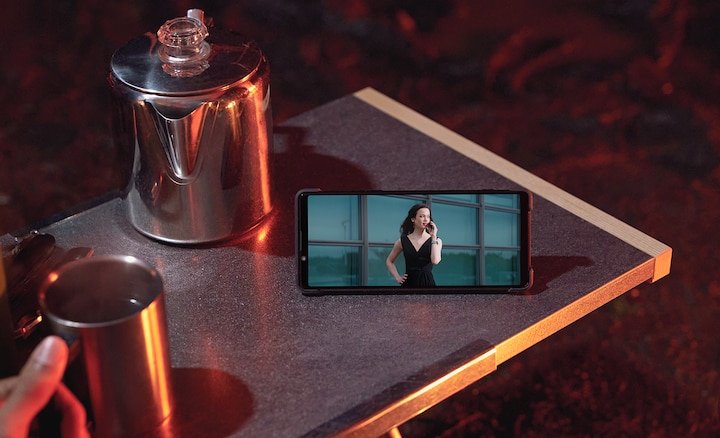
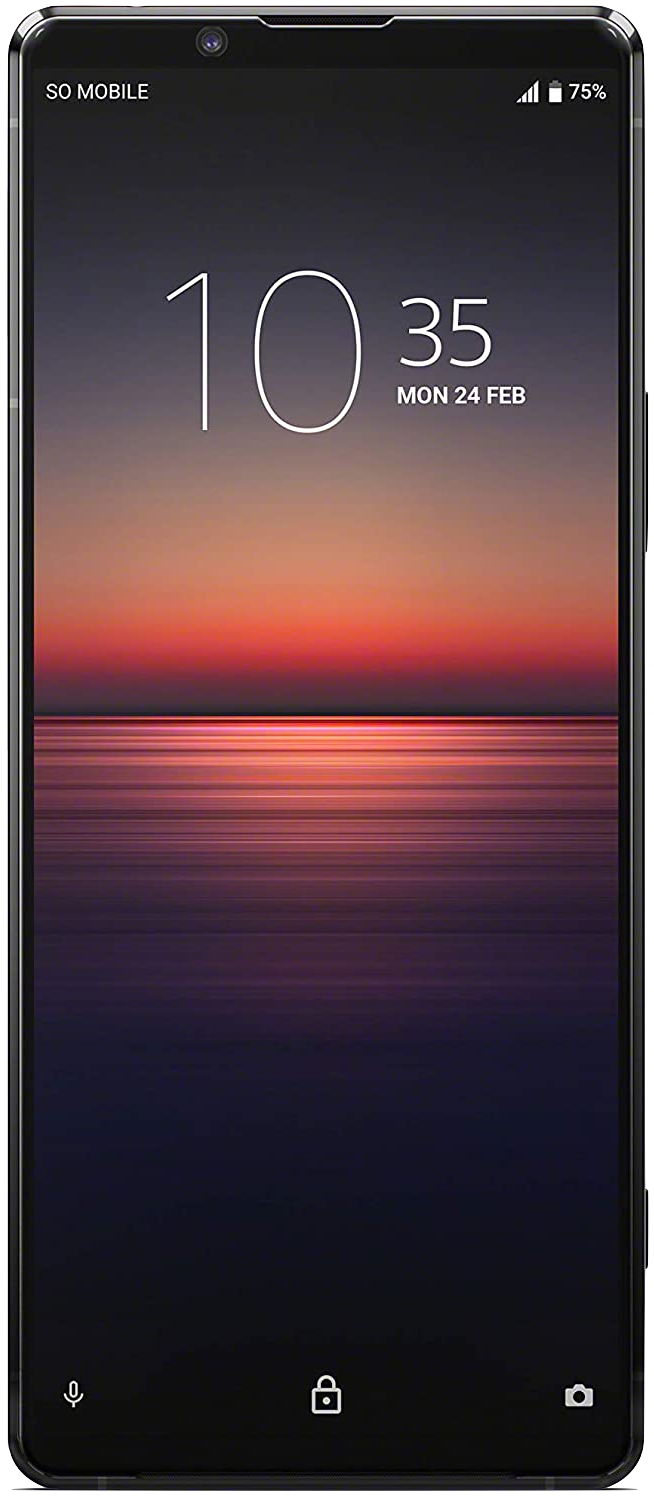
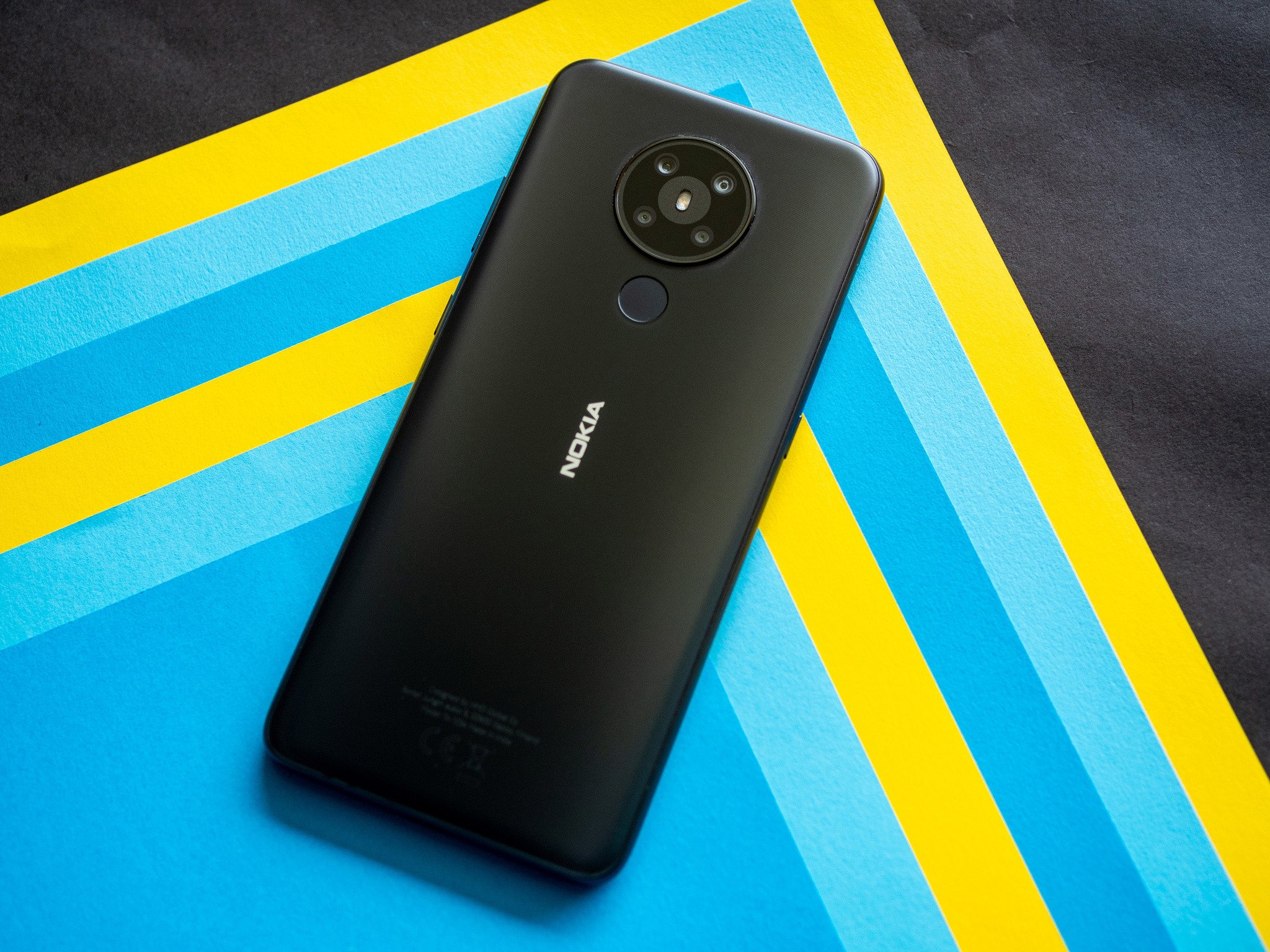
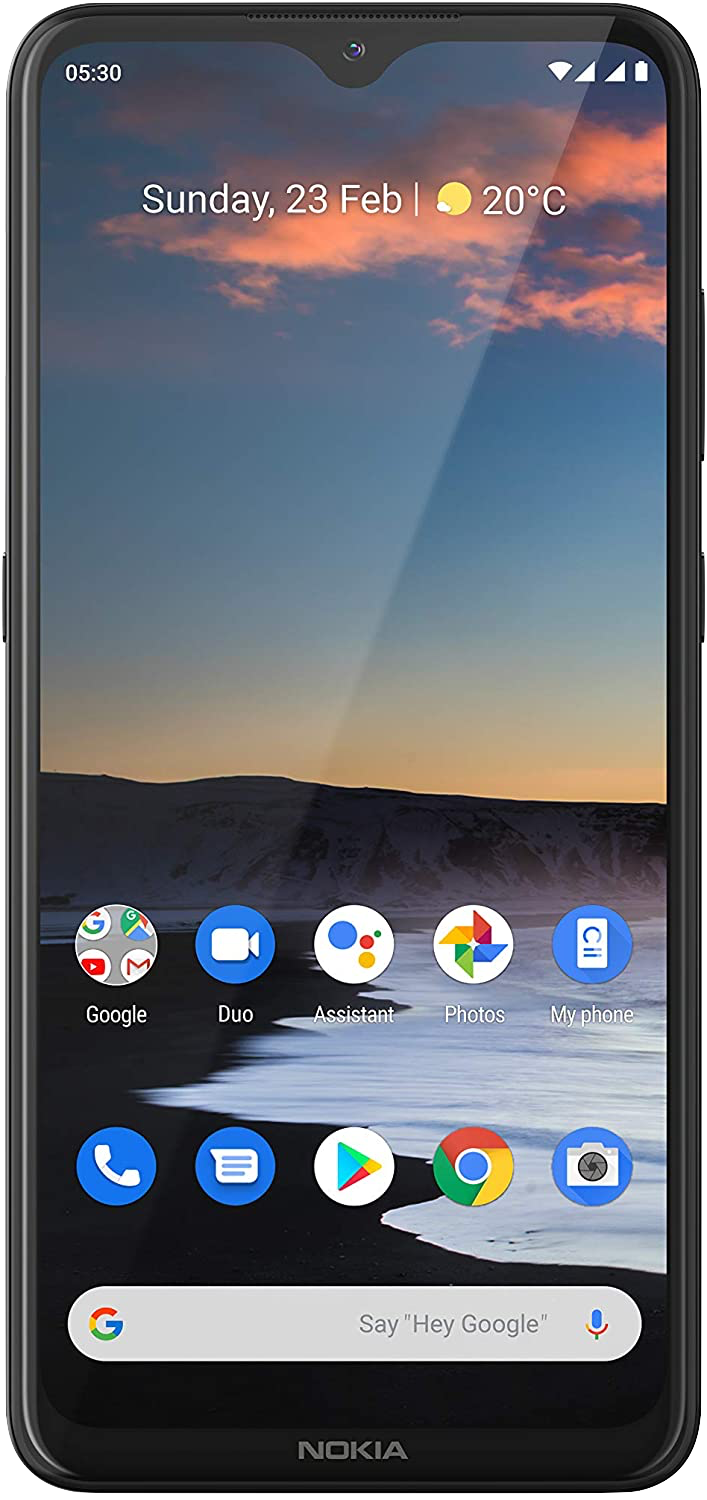

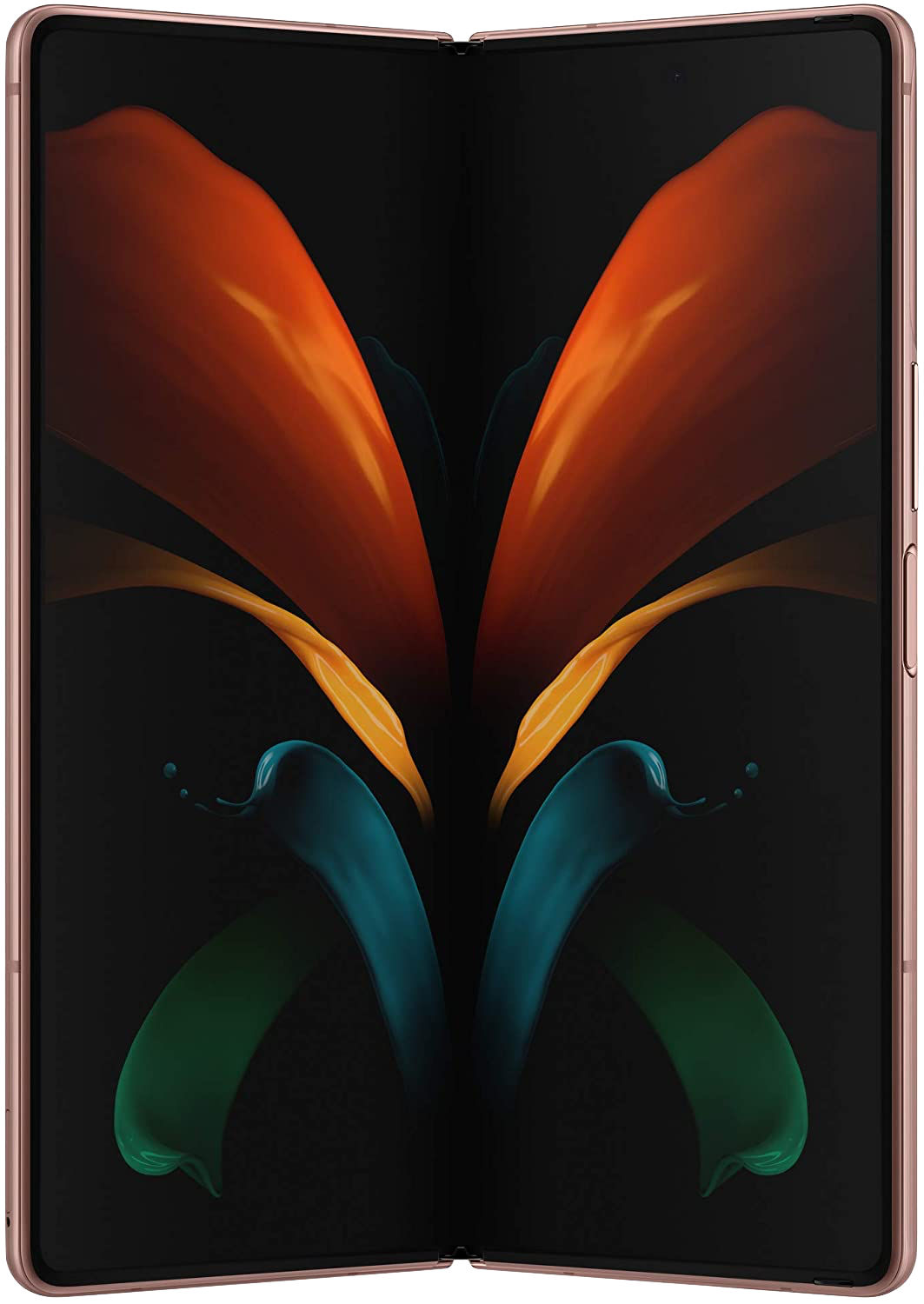

ليست هناك تعليقات: